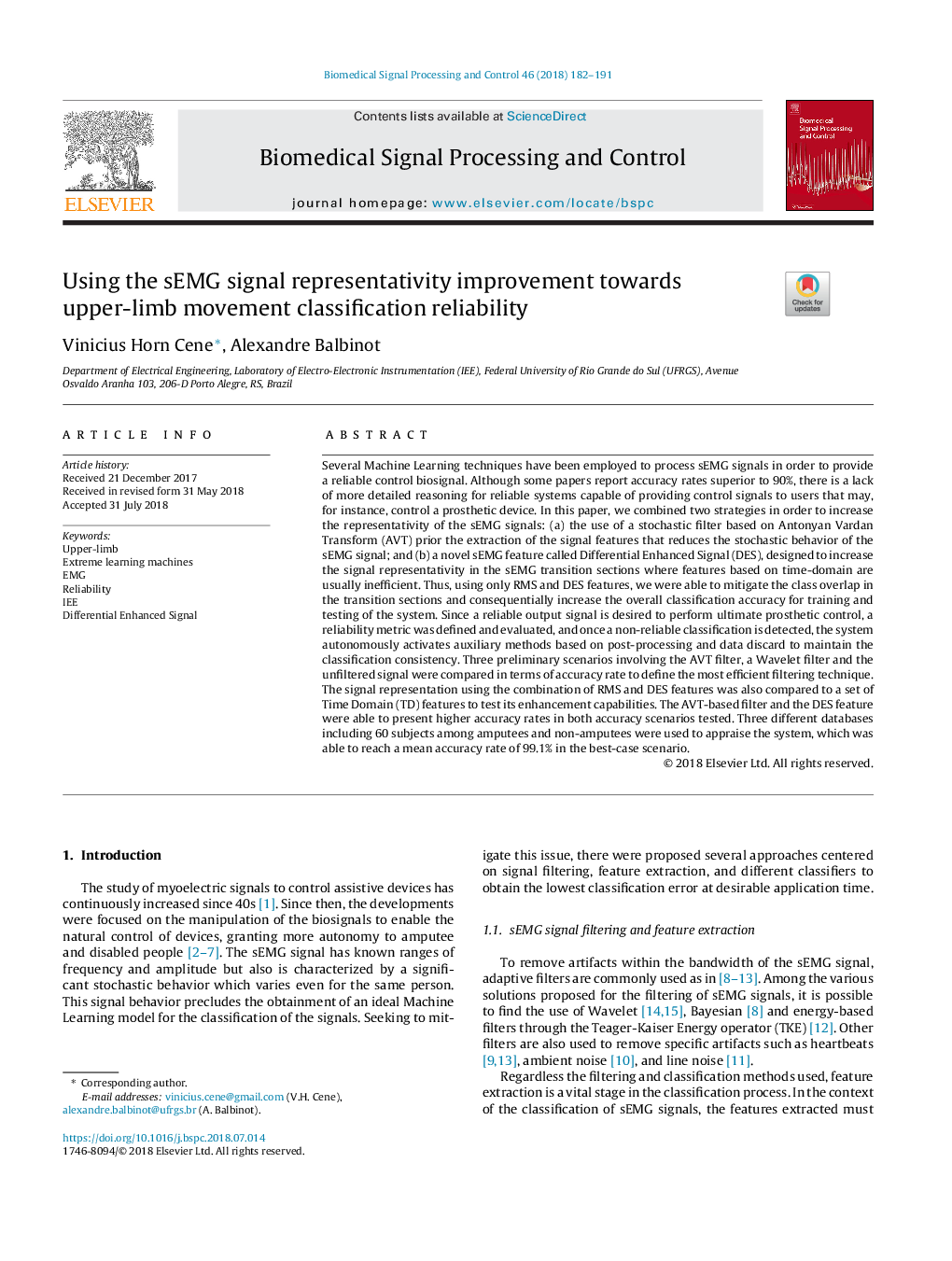| کد مقاله | کد نشریه | سال انتشار | مقاله انگلیسی | نسخه تمام متن |
|---|---|---|---|---|
| 6950662 | 1451634 | 2018 | 10 صفحه PDF | دانلود رایگان |
عنوان انگلیسی مقاله ISI
Using the sEMG signal representativity improvement towards upper-limb movement classification reliability
دانلود مقاله + سفارش ترجمه
دانلود مقاله ISI انگلیسی
رایگان برای ایرانیان
کلمات کلیدی
موضوعات مرتبط
مهندسی و علوم پایه
مهندسی کامپیوتر
پردازش سیگنال
پیش نمایش صفحه اول مقاله

چکیده انگلیسی
Several Machine Learning techniques have been employed to process sEMG signals in order to provide a reliable control biosignal. Although some papers report accuracy rates superior to 90%, there is a lack of more detailed reasoning for reliable systems capable of providing control signals to users that may, for instance, control a prosthetic device. In this paper, we combined two strategies in order to increase the representativity of the sEMG signals: (a) the use of a stochastic filter based on Antonyan Vardan Transform (AVT) prior the extraction of the signal features that reduces the stochastic behavior of the sEMG signal; and (b) a novel sEMG feature called Differential Enhanced Signal (DES), designed to increase the signal representativity in the sEMG transition sections where features based on time-domain are usually inefficient. Thus, using only RMS and DES features, we were able to mitigate the class overlap in the transition sections and consequentially increase the overall classification accuracy for training and testing of the system. Since a reliable output signal is desired to perform ultimate prosthetic control, a reliability metric was defined and evaluated, and once a non-reliable classification is detected, the system autonomously activates auxiliary methods based on post-processing and data discard to maintain the classification consistency. Three preliminary scenarios involving the AVT filter, a Wavelet filter and the unfiltered signal were compared in terms of accuracy rate to define the most efficient filtering technique. The signal representation using the combination of RMS and DES features was also compared to a set of Time Domain (TD) features to test its enhancement capabilities. The AVT-based filter and the DES feature were able to present higher accuracy rates in both accuracy scenarios tested. Three different databases including 60 subjects among amputees and non-amputees were used to appraise the system, which was able to reach a mean accuracy rate of 99.1% in the best-case scenario.
ناشر
Database: Elsevier - ScienceDirect (ساینس دایرکت)
Journal: Biomedical Signal Processing and Control - Volume 46, September 2018, Pages 182-191
Journal: Biomedical Signal Processing and Control - Volume 46, September 2018, Pages 182-191
نویسندگان
Vinicius Horn Cene, Alexandre Balbinot,